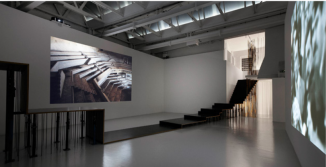It was constructed with international donations during the Oslo Years but the project was abandoned before completion. Now the Wall cuts the building off from Jerusalem. Thus, the building stands like a monument to the collapsed peace process but this condition of local impossibility allows for a political imaginary to arise. Thus, the building becomes a starting point to imagine new types of political assembly.
We will use the building both as a site of intervention as well as a site of architectural speculation. Our goal is to work through an understanding of the relationships between territory, population and political representation. In Palestine, the population cannot be represented by a single parliament building, as it would serve only a people within imposed borders that fragment all those who see themselves as Palestinians; it must operate through disassociations in which the constituency, the building and the territory are categories in constant motion in relation to each other.
Therefore, the project seeks to operate simultaneously in different sites: re-creating and activating what we call “common assemblies” in several locations inside and outside Palestine, especially in scattered exraterritorial places such as refugee camps, and internationally within a set of cultural and academic institutions.

